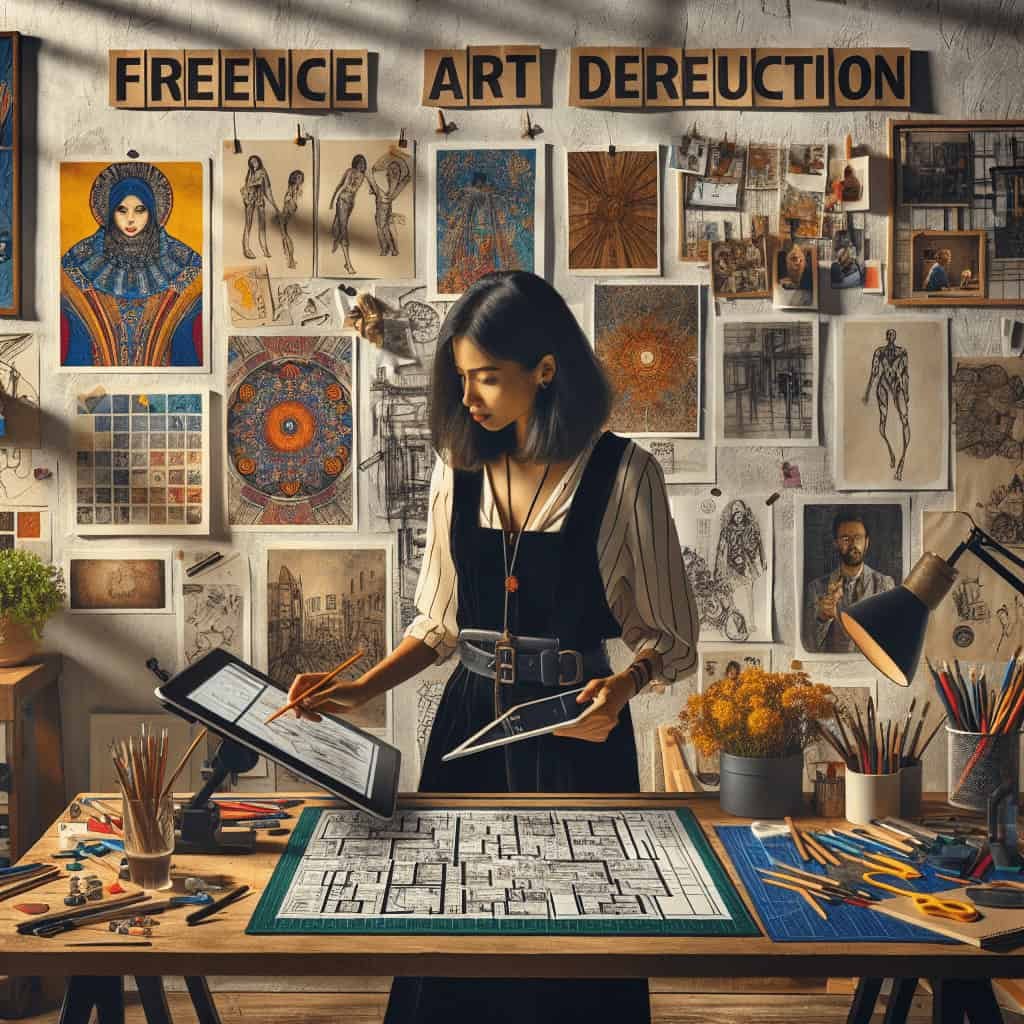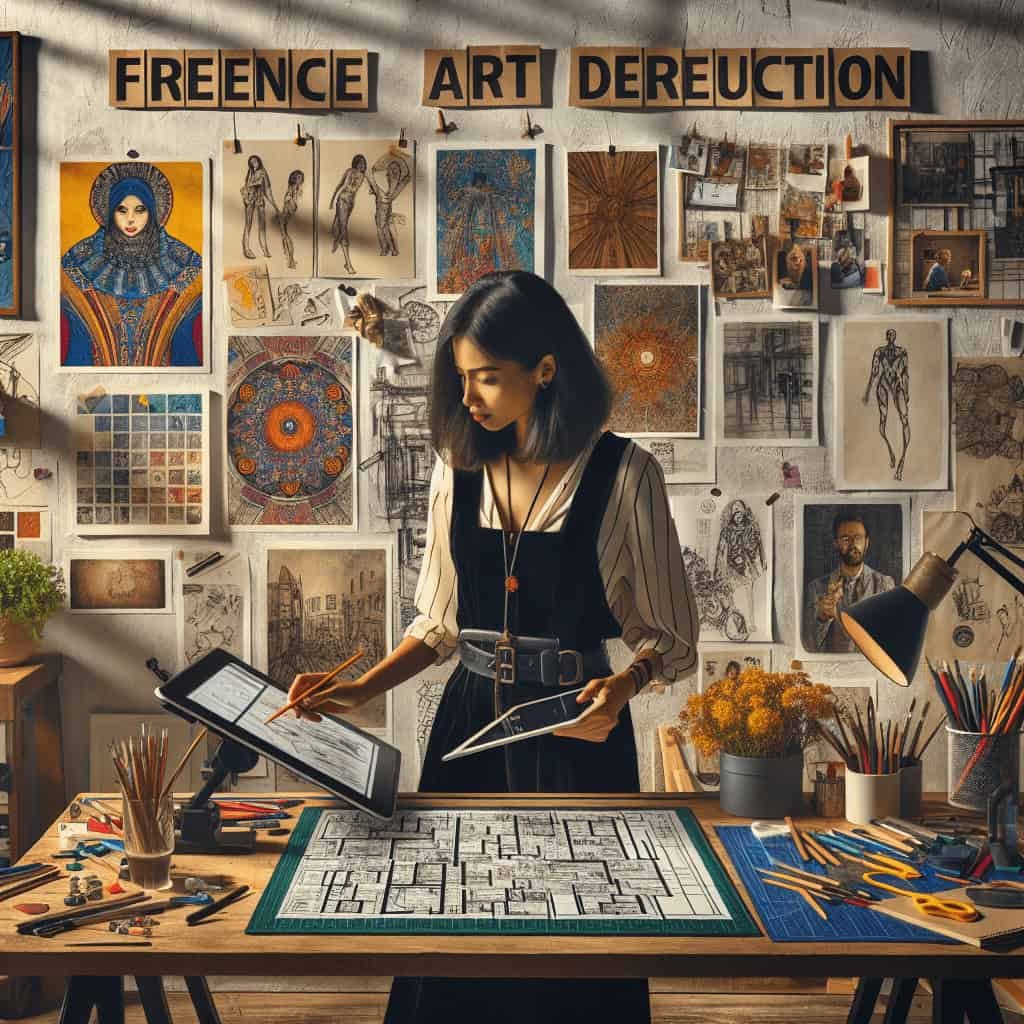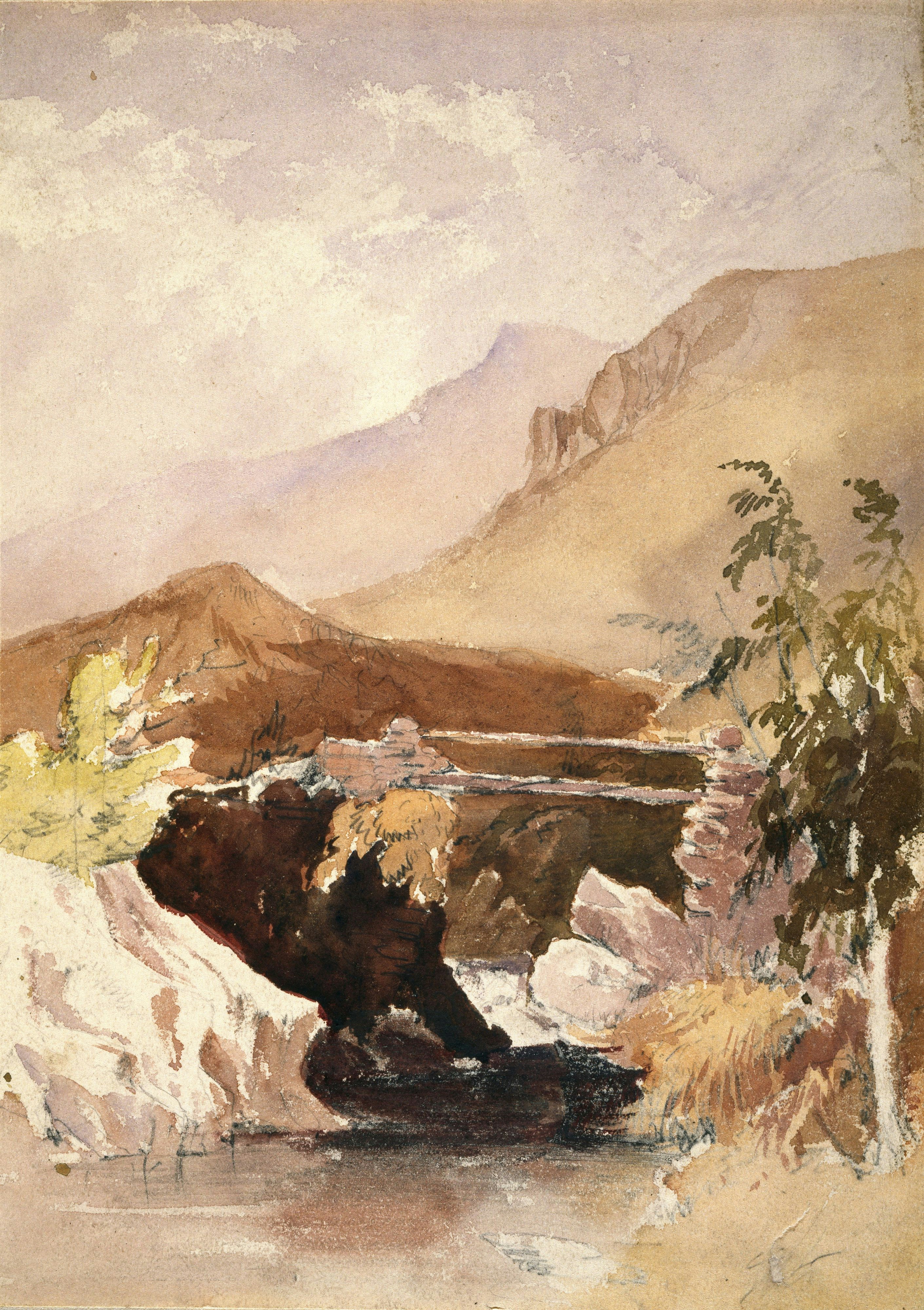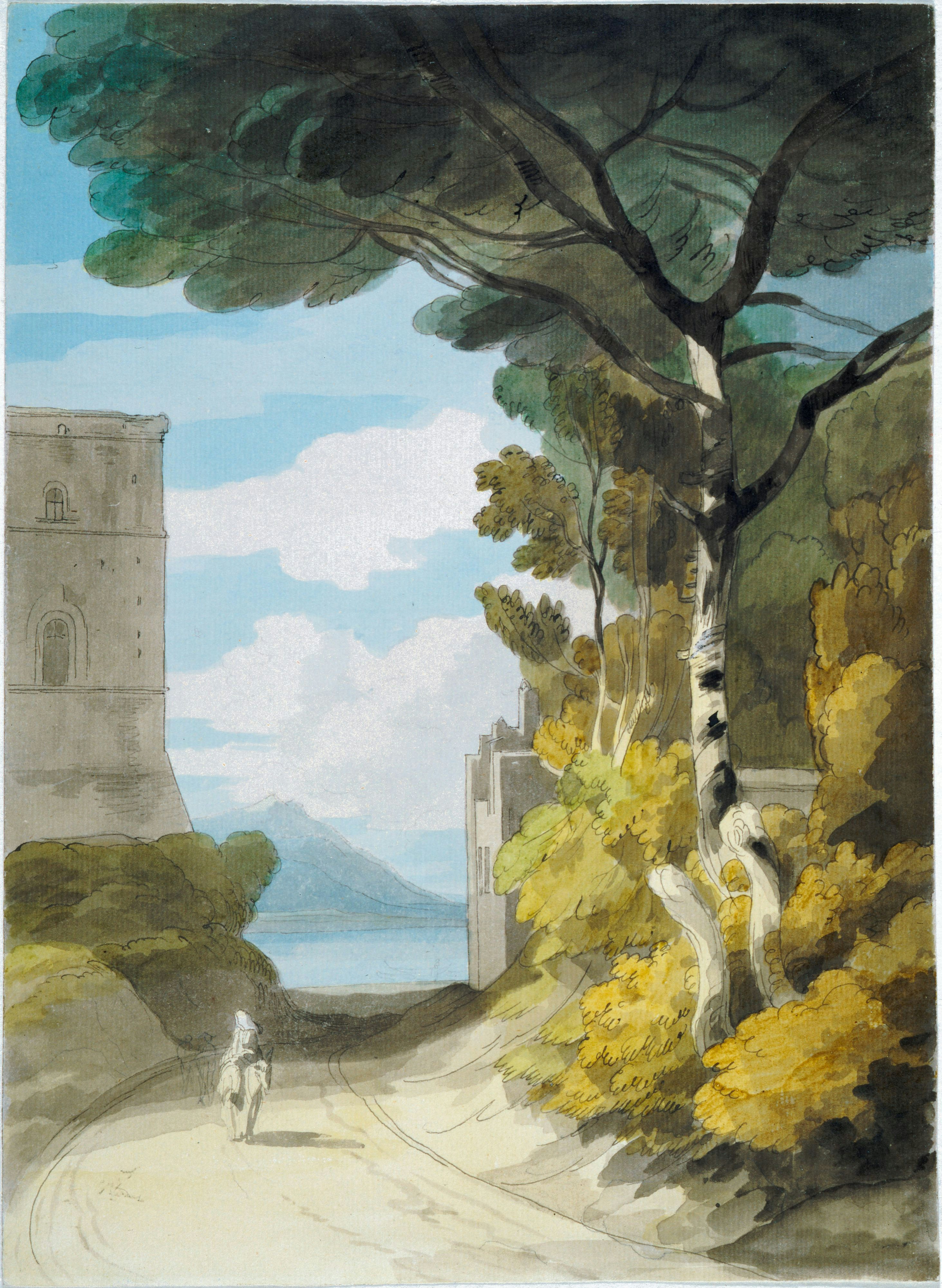Are you ready to take the plunge into the world of freelance art directing? If you have a passion for creativity, an eye for design, and a knack for leadership, then this might just be the perfect job for you. As a freelance art director, you will have the opportunity to work on a variety of projects, collaborating with different teams and clients to bring their visions to life. From coordinating photo shoots to overseeing the production of digital content, your artistic expertise and organizational skills will shine as you navigate the exciting world of freelance art directing. So, why wait? It’s time to embrace your talent and embark on this thrilling career path as a freelance art director.
Job Description
As a freelance art director, you play a crucial role in the creative process of various projects. From concept development to final execution, your expertise and vision come to life through your artistic abilities and leadership skills. You are responsible for overseeing the artistic direction and ensuring that the visual elements align with the client’s brand and objectives.
Responsibilities
Your responsibilities as a freelance art director are diverse and dynamic. You will be in charge of developing and executing creative concepts, often collaborating with clients, designers, and other creative professionals. You will provide guidance and creative direction, ensuring that the project meets the client’s expectations and objectives. Additionally, you will review and provide feedback on design work, making necessary revisions to achieve the desired outcome.
Qualifications
To excel as a freelance art director, certain qualifications are essential. A degree in graphic design or a related field is typically required, as it provides a strong foundation in design principles and practices. An artistic background is also beneficial, as it allows you to bring a unique perspective and creativity to your work. Continual education and staying updated with industry trends and new technologies are crucial in this fast-paced field.
Skills and Attributes
Being a successful freelance art director requires a combination of technical expertise and personal attributes. Here are some important skills and attributes that can contribute to your success.
Creativity
Creativity is at the heart of being an art director. Your ability to think outside the box and come up with innovative ideas is essential for creating visually compelling designs.
Leadership
As a freelance art director, you are not only an artist but also a leader. You must be able to guide and manage a team of designers, providing clear direction and feedback to ensure the successful execution of the project.
Communication
Effective communication is crucial when working with clients, designers, and other professionals. You must be able to clearly convey your ideas, provide constructive feedback, and actively listen and understand the needs and expectations of others.
Technical Skills
Having a strong foundation in design software and tools is essential for a freelance art director. Proficiency in programs such as Adobe Creative Suite (Photoshop, Illustrator, InDesign) and knowledge of current design trends and technologies will enable you to create visually stunning and up-to-date designs.
Time Management
As a freelance art director, you will often juggle multiple projects with varying deadlines. Excellent time management skills are crucial in order to prioritize tasks, stay organized, and deliver work on schedule.
Flexibility
The ability to adapt to changes and be flexible in your approach is important as a freelance art director. The creative process can be unpredictable, and being able to adjust your plans and ideas accordingly will help you meet client expectations and deliver successful projects.
Business Acumen
Having a good understanding of the business side of freelancing is important for a freelance art director. This includes setting fair pricing, managing contracts, invoicing, and maintaining professional relationships to ensure a successful career.
Education and Training
To be a freelance art director, a degree in graphic design or a related field is typically required. This formal education provides you with the necessary knowledge and skills in design principles, typography, color theory, and composition. Additionally, having an artistic background, such as a background in fine arts, can further enhance your creativity and ability to conceptualize unique and visually appealing designs. Continuous education is also important to stay up-to-date with industry trends, new software, and design techniques.
Portfolio
A portfolio is a crucial tool for a freelance art director to showcase their work and attract potential clients. Here are some key considerations for building an impressive portfolio that sets you apart from the competition.
Quality vs. Quantity
Emphasize quality over quantity when curating your portfolio. Highlight your best work that demonstrates your range of skills, creativity, and ability to meet client objectives. It’s better to have a few outstanding and diverse pieces than a large number of mediocre ones.
Relevant Work
Include projects in your portfolio that are relevant to the type of work you want to attract. Tailor your portfolio to showcase your expertise in specific industries or design styles that align with your target clients’ needs and preferences.
Variety
Demonstrate your versatility as an art director by showcasing a variety of projects, showcasing different design styles and mediums. This will show potential clients that you can adapt to their specific needs and deliver unique designs.
Work Environment
As a freelance art director, you have the flexibility to work in various environments. Here are some considerations regarding the work environment.
Remote Work
Freelancing often allows you to work remotely, providing the freedom to work from anywhere in the world. This flexible work arrangement can be appealing for those who prefer a non-traditional office setting and enjoy the benefits of setting their own schedules.
Collaboration
While freelancing offers independence, collaboration with other professionals is often necessary in projects. Being able to effectively communicate and collaborate with designers, copywriters, photographers, and other creative professionals is crucial to ensure the successful execution of a project.
Client Interaction
As a freelance art director, you will frequently interact with clients throughout the creative process. Effective communication, active listening, and understanding their needs and objectives are essential to building strong client relationships and delivering designs that exceed their expectations.
Finding Clients
Finding clients is a vital aspect of a successful freelance career. Here are some strategies for attracting clients and building your client base.
Networking
Networking plays a significant role in finding clients. Attend industry events, join professional organizations, and participate in design communities to connect with potential clients and fellow professionals. Building relationships and gaining referrals can lead to new opportunities.
Online Platforms
Utilize online platforms dedicated to connecting freelancers with clients. Websites such as Upwork, Freelancer, and Behance can help you showcase your portfolio and connect with clients seeking your expertise.
Referrals
Word-of-mouth referrals are powerful in the freelancing world. Providing exceptional service and building strong relationships with your existing clients can lead to referrals from satisfied clients, expanding your client base.
Cold Outreach
Don’t hesitate to reach out to potential clients directly. Research companies or individuals who may benefit from your services and send a personalized proposal or introduction email showcasing your skills and portfolio. Persistence and patience are key when pursuing cold outreach.

Contracting and Payments
Setting clear terms and ensuring prompt payment are vital components of a successful freelance business. Here are some considerations regarding contracting and payments.
Contract Terms
Create a comprehensive contract that outlines the scope of work, project timeline, deliverables, revisions, copyrights, and payment terms. Having a signed agreement protects both parties and ensures that expectations are clear from the beginning.
Pricing
Setting fair pricing for your services can be a challenge. Consider factors such as your experience, expertise, project complexity, and industry standards when determining your rates. Be transparent with clients about your pricing and any additional costs they may incur.
Payment Methods
Offer various payment methods to accommodate your clients’ preferences. PayPal, bank transfers, and payment platforms like Stripe can provide convenient and secure options for receiving payments.
Invoicing
Consistently and promptly invoicing your clients is crucial for maintaining a healthy cash flow. Clearly outline the services provided, costs, and payment terms on your invoices to avoid confusion and ensure timely payment.
Challenges and Solutions
Freelancing as an art director comes with its own set of challenges. Here are some common challenges you may encounter and possible solutions.
Managing Multiple Projects
Juggling multiple projects can be overwhelming. Establishing a project management system, prioritizing tasks, and effectively communicating with clients and team members can help you stay organized and meet project deadlines.
Handling Feedback
Receiving feedback on your work is inevitable. Approach feedback with an open mind, view it as an opportunity for growth, and adapt your designs based on constructive criticism. Effective communication with clients can help clarify expectations and avoid misunderstandings.
Managing Time and Deadlines
Time management is crucial for meeting project deadlines. Create a schedule, set realistic timelines, and establish clear expectations with clients to ensure that deadlines are met. Use time-tracking tools to monitor your productivity and identify areas for improvement.
Maintaining a Consistent Income
Freelancing can have fluctuating income levels. Building long-term relationships with clients, seeking recurring projects, and having a financial plan to handle lean periods can help maintain a consistent income.
Freelance Career Development
To thrive as a freelance art director, continuous learning, networking, building a reputation, and diversifying your skill set are essential. Here are some strategies to further develop your freelance career.
Continuous Learning
Stay updated with industry trends, new design software, and emerging technologies through conferences, workshops, online courses, and industry publications. Continual learning helps you stay competitive and enhances your skills and knowledge.
Networking and Professional Relationships
Attend industry events, join design communities, and actively engage with fellow professionals to expand your network. Building mutually beneficial relationships with other designers, copywriters, and professionals can lead to collaborations and referrals.
Building a Reputation
Deliver exceptional work, meet deadlines consistently, and provide outstanding customer service to build a strong professional reputation. Positive client testimonials, referrals, and recommendations from industry professionals can solidify your reputation and attract new clients.
Diversifying Skill Set
Diversifying your skill set allows you to take on a wider range of projects. Consider learning additional design software, exploring new design styles or mediums, or acquiring complementary skills such as copywriting or project management. This versatility enhances your marketability and opens up new opportunities.
Job Outlook and Prospects
The demand for freelance art directors is expected to grow as businesses and organizations increasingly recognize the importance of strong visual branding and design. The ability to work remotely offers more opportunities for freelancers to connect with clients worldwide. However, the freelance industry is highly competitive, and staying current with industry trends, building connections, and continuously enhancing your skills are critical for standing out among the competition.
Overall, the freelance art director career provides immense potential for growth, creativity, and independence. By honing your skills, building a strong portfolio, and effectively marketing yourself, you can establish a successful freelance career in the ever-evolving field of art direction.




